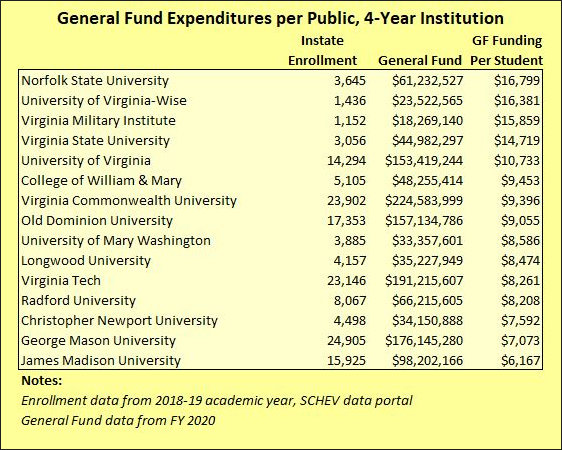In an effort to “level the playing field,” Governor Ralph Northam is proposing nearly $300 million in additional spending in the next two-year budget at Virginia’s two public historically black universities. Virginia State University would get $150 million more, and Norfolk State University would get $143 million more.
“Virginia’s historically black colleges and universities are tremendously important — but they have not always received the state funding they deserve,” he said in a statement Saturday, as reported by the Virginian-Pilot. “This budget package is about leveling the playing field and investing in these world-class institutions, so all students have equal access to a great higher education.”
Added Northam spokeswoman Alena Yarmosky: “NSU and VSU are receiving a significant level of new funding when compared to many other public 4-year universities in the Commonwealth.”
The bulk of the money would be allocated to one-time capital expenditures.
Northam’s justification for this lavish treatment is that Virginia’s public HBCUs “have not always received the state funding they deserve.” The Virginian-Pilot article makes no mention of any evidence the governor might have cited to back up that assertion.
Wondering what might be the truth of the matter, I took General Fund expenditures for the current biennial budget for each public four-year institution in Virginia and divided that support by in-state enrollment for the 2018-19 school year as found in the State Council for Higher Education in Virginia data portal. (Note: the table above should say that General Fund data comes from the FY 2019 and FY 2020 budgets.)
This exercise shows that Norfolk State University received almost $16,800 in General Fund allocations per student — more than any other institution in Virginia. This number covers state aid to institutions, supplementary aid offered as incentive to hold tuition in line, and financial aid — and perhaps more, I’m not sure.
Virginia State University comes close behind, in the No. 4 slot, at $14,719 per student for the two-year period.
As far as support for ongoing operations are concerned, NSU and VSU fare far better than most other institutions. How much does Governor Northam think they “deserve”? Do they “deserve” to have state support far in excess of what every other institution is getting?
Admittedly, money for operations is not the same as money for capital expenditures. In the time I had available this morning, I could not identify a concise summary of capital spending per institution over a lengthy time frame. Capital expenditures fluctuate year to year depending upon projects in the pipeline, so looking at a single biennial budget can be deceiving.
It is theoretically possible that NSU and VSU have been short-changed over the years, although it is my recollection that every governor since Jim Gilmore has been attentive to the needs of the HBCUs. I have not visited VSU in years, but I did spend some time on the NSU campus a couple of years back, and I can say that the quality of its facilities looks top rate. The buildings are new and well maintained. To be comprehensive, however, we also have to consider what’s “under the hood” — the quality of IT infrastructure, energy infrastructure, and the like, and I have no basis for making an observation about that.
Bacon’s bottom line: As governor, Northam has the responsibility to support his claim that NSU and VSU have been treated unfairly. If the two HBCUs have been short-changed in capital funding, he should show us the data to prove the point. Such data may exist, and I will be happy to publish it, if it does. Until he justifies this $300 million hand-out to the two institutions, however, he will be vulnerable to suggestions that he continues to pay penance for his blackface fiasco with public tax dollars.


Leave a Reply
You must be logged in to post a comment.